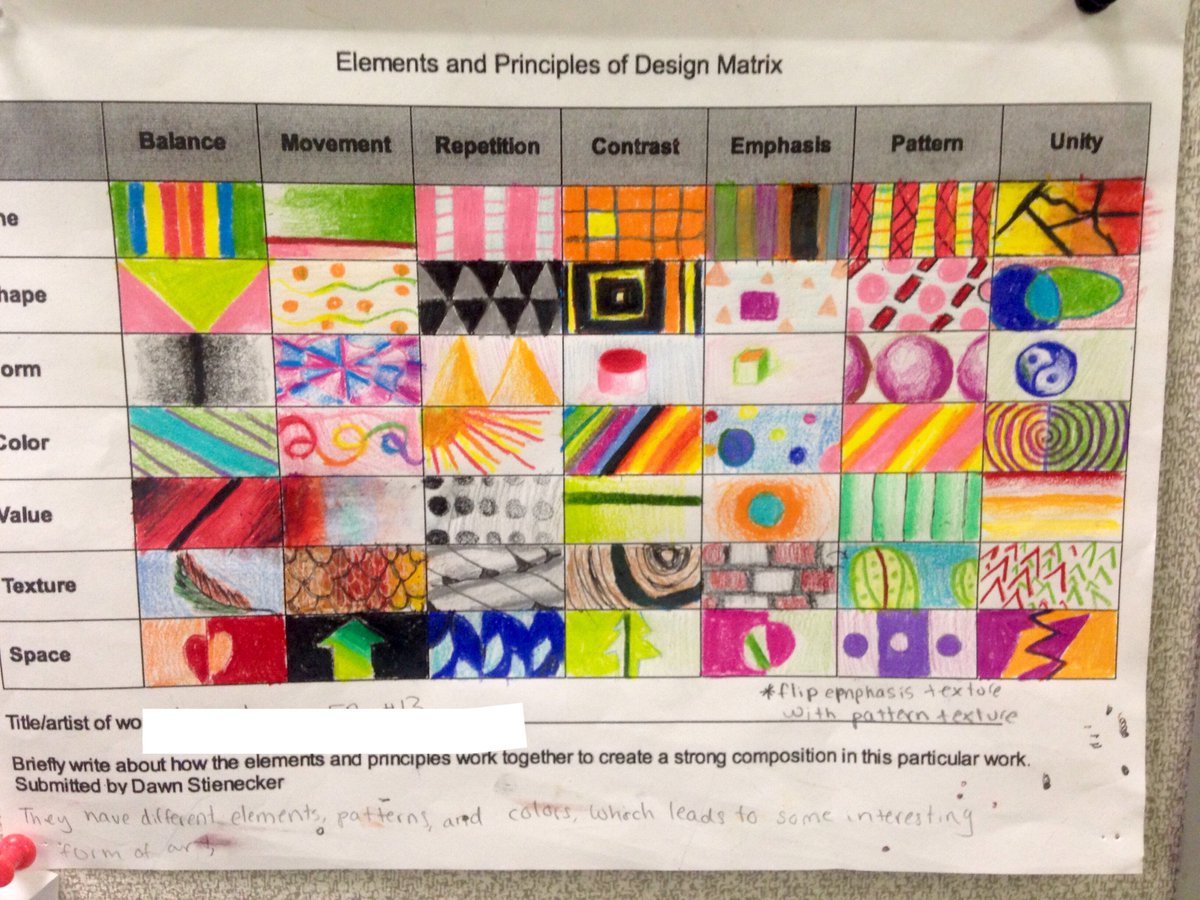

Movement is the path the viewer’s eye takes through the work of art, often to focal areas. The area could be different in size, color, texture, shape, etc. Usually the artist will make one area stand out by contrasting it with other areas. In radial balance, the elements are arranged around a central point and may be similar.Įmphasis is the part of the design that catches the viewer’s attention. In symmetrical balance, the elements used on one side of the design are similar to those on the other side in asymmetrical balance, the sides are different but still look balanced. If the design was a scale, these elements should be balanced to make a design feel stable. Foreground, Middle ground and Background!īalance is the distribution of the visual weight of objects, colors, texture, and space. This element of art also refers to the "parts" of the picture. Negative space is the area around that object. Positive space refers to the part of the artwork that takes up space. Space The element of art that refers to the emptiness or area around or within objects. Shadow, highlight, and light source are also some vocabulary words to consider with this element of art. Value vocabulary includes tint (adding white to make something lighter), shade (adding black to make something darker) and hue (the true color). Value The lightness or darkness of an object the degree of lightness or darkness in a piece of art or the effect of light and shade on objects in a picture. Examples of form can include cubes, cylinders, and spheres. There are two kinds of texture: Real (how something actually feels, such as a sculpture) and Implied (when an artist paints or draws a texture but it is artificial).įorm Objects having three dimensions (3D), or height, width, and depth. Texture How something feels or looks like it would feel if you could touch it.

They are purple (violet), orange and green. The secondary colors are created by mixing the primary colors. The primary colors are red, yellow and blue. Color adds interest and mood to a work of art. Examples of shapes could be geometric, organic/natural, irregular, circle, square, rectangle, diamond, oval, crescent, heart, triangle, octagon.Ĭolor The element of art derived from reflected or absorbed light. When a line crosses over itself it creates a shape. Shape A two-dimensional (2D), flat enclosed area. A line can be straight, swirly, wavy, jagged, dotted, dashed, broken, thick, thin, zig zag, diagonal, vertical, horizontal, curved, bold, parallel or perpendicular. Line A path created by a moving point, mark or object. This is the vocabulary we use to describe works of art. The elements of art are the "building blocks" of art.


 0 kommentar(er)
0 kommentar(er)
